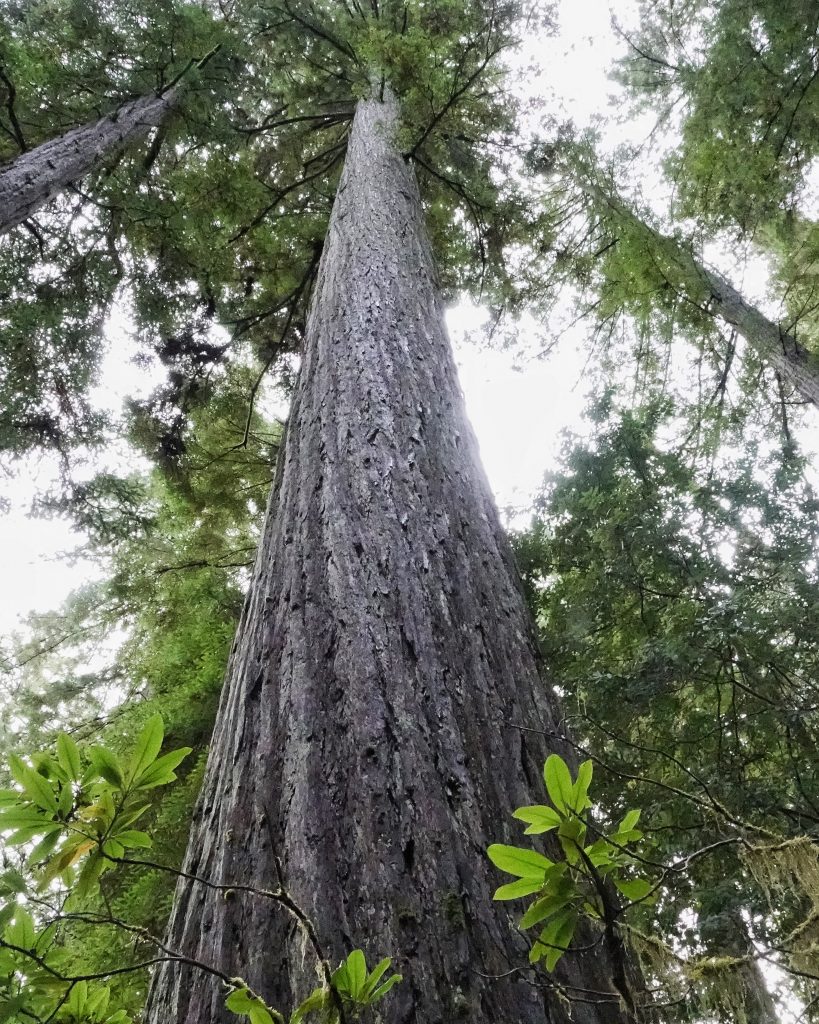
As I mentioned in ‘Pivoting’, I hadn’t been in a redwood forest since I was a kid, and at that age everything looked huge, so I wasn’t really mentally prepared for how large redwood trees really are. In fact in the comments section of a hiking site talking about this trail, someone had said that it was an ok trail, if you liked little redwoods. Turns out they were either being facetious, or were delusional, or were just spoiled, because I sure don’t consider 200’ tall trees that are 8-10’ wide at their base to be little, and there were at least a dozen that I saw on the Redwoods Nature trail #1111 that were at least that big! I do realize they get much bigger than that, but still, trees bigger than almost all of the old growth Doug-fir I’ve ever seen are not little.
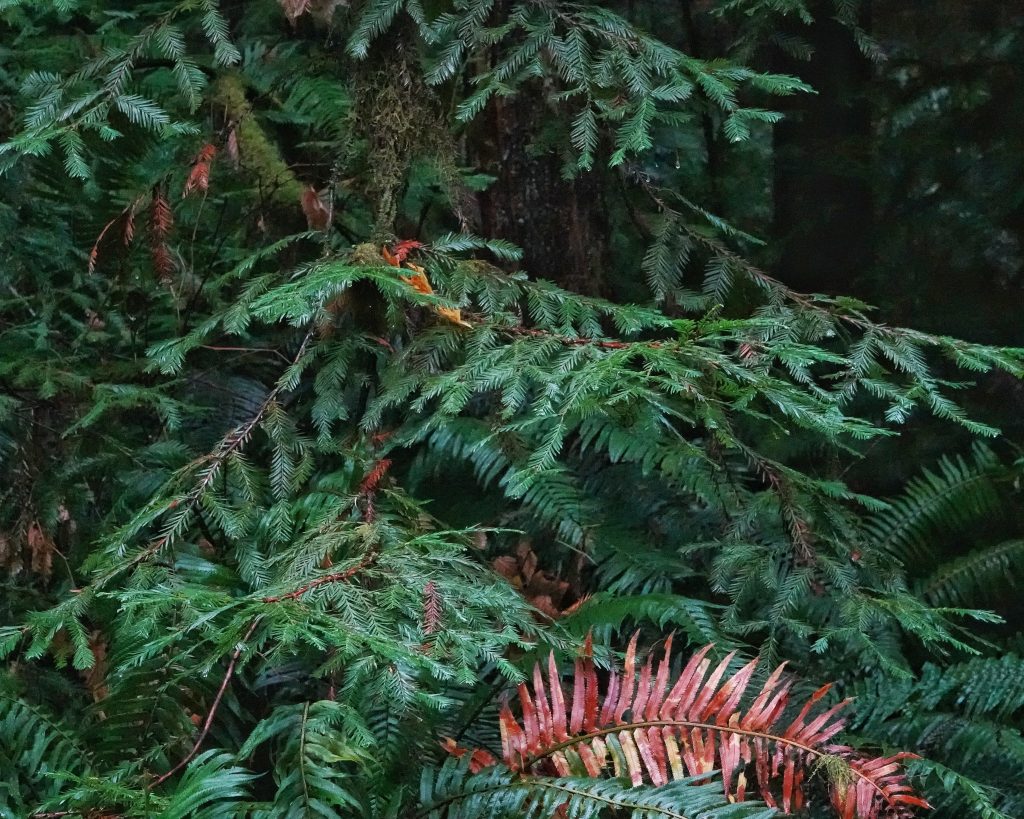
Redwoods are the tallest trees in North America, with several that are over 350’ tall, and some of the oldest trees, with specimens over 2,000 years old having been recorded. In my reading I see that these magnificent trees also carry the common names coast redwood and California redwood, but since there is only one species of redwood in North America, and it doesn’t reside strictly in California, I see no reason to affix a location label to the name. Besides which I’ve never heard anyone refer to them as anything but redwoods.
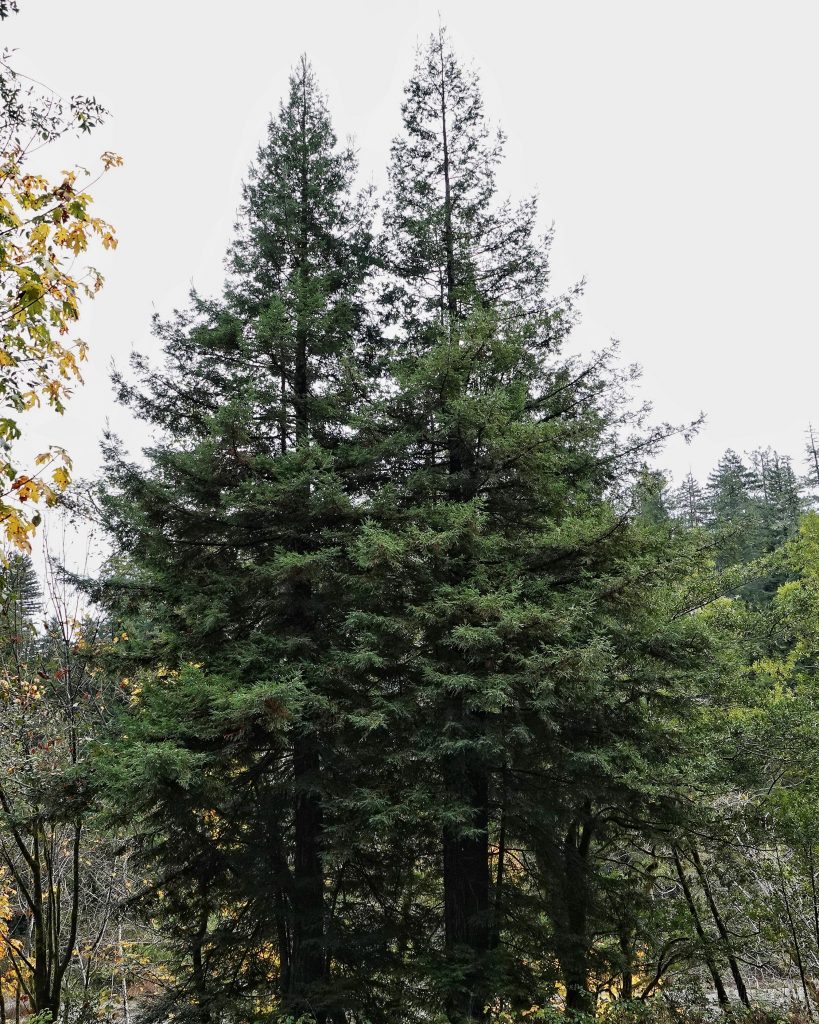
There are those who consider redwoods to be a climax species, but others argue that they are a seral species, and without fire the redwoods will eventually be replaced by Doug-fir, western hemlock, and western red-cedar. But since this is such a long lived species the point is moot, because it is highly unlikely that their environs will escape fire for the next 2,000 years. In the trees I saw near the Chetco River there was ample evidence that they can survive fire, since all of the largest trees I saw were charred near the base, and some of them were scorched to 30-40’ high. They can survive these blazes because their bark is thick (up to a foot thick), but fire scars can open a tree to heart rot, leading to the large cavities often seen at the base of still-living trees. These cavities are often called ‘goose pens’, after the practice of early settlers to cage their domestic waterfowl within them. Even in stand killing fires new sprouts appear relatively quickly from the root crowns. For a more complete picture of their response to fire see the Forest Service Fire Effects Information System (Griffith; 1992) page.
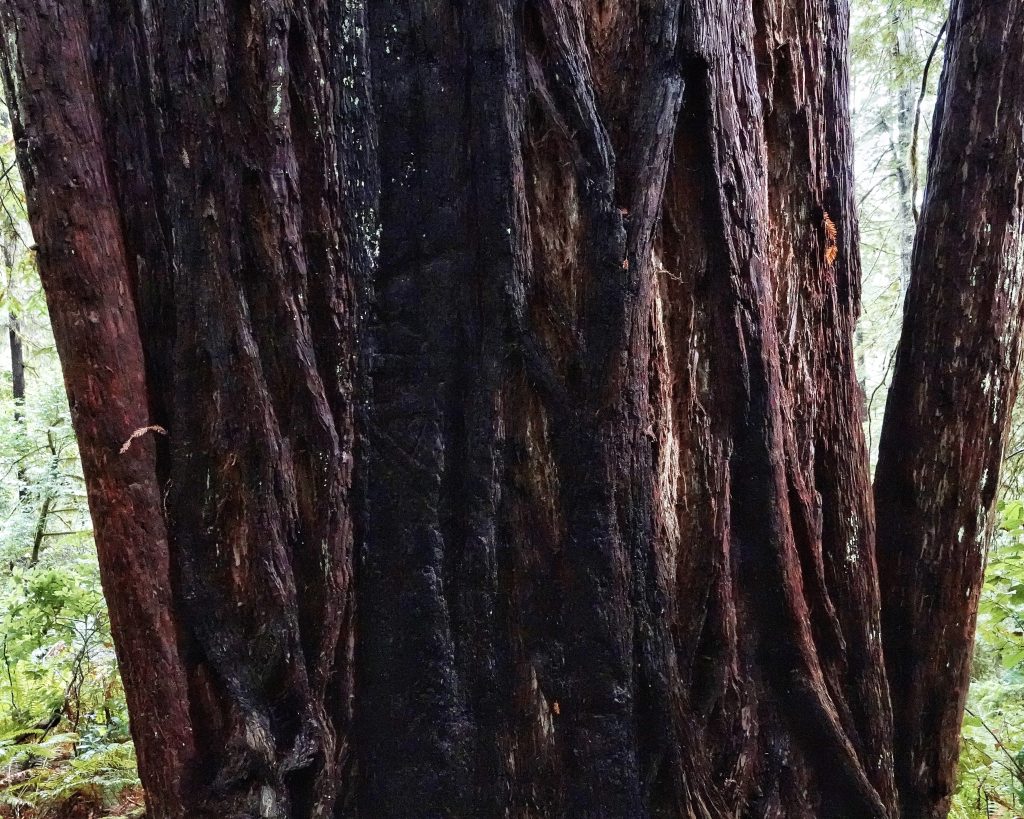
Redwoods have an exceptional ability to photosynthesize at low light levels, and are thus considered to be very shade tolerant. However even old trees will experience accelerated growth by opening of the canopy (called release in silviculture), with one 1,000 year old tree increasing its girth at the rate of 6 rings per inch, after it had been growing at the rate of thirty rings per inch. Because of their widely spreading lateral roots they are relatively resistant to windthrow, and usually only topple when high winds are combined with heavy and prolonged rainfall which has saturated the ground. They do sometimes have their tops broken off in high winds, though that is often the result of insect and or fungal infestations. For more on the ecology of redwoods see Olson/Roy/Walters in ‘Silviculture of North America; Vol 1- Conifers’.
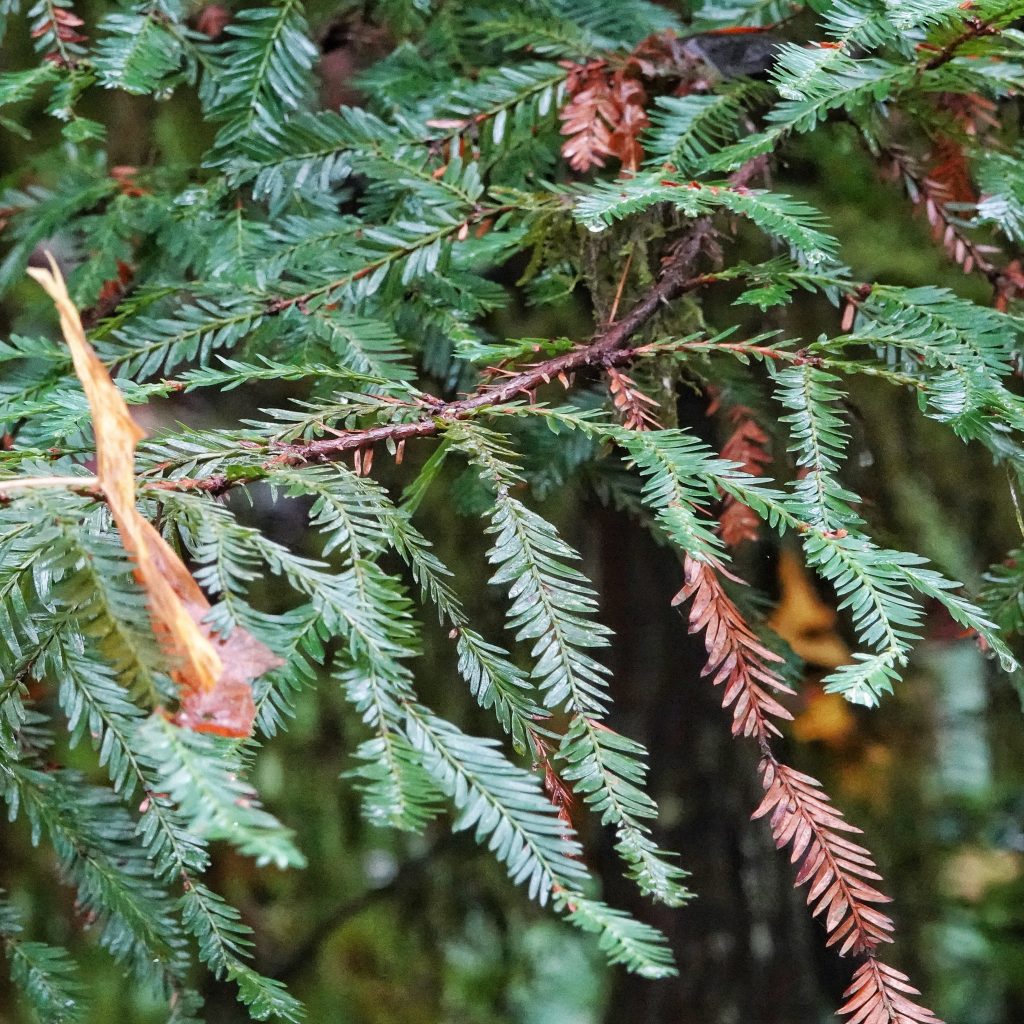
As I mentioned in my profile of tanoak, the value of a tree doesn’t lie solely in what feeds upon it, although the list of redwood munching critters is certainly long and diverse. But redwoods are particularly important for the habitat they create, and in their range they are vital to the survival of two endangered species, spotted owls (who require old growth habitat) and marbled murrelets (who nest exclusively on upper limbs of old growth redwoods where they are available). Pileated woodpeckers also benefit from having redwoods available, because their softer wood allows them to excavate nests in living trees, which means they aren’t forced to choose between an area of abundant forage and one with an appropriate nesting site.
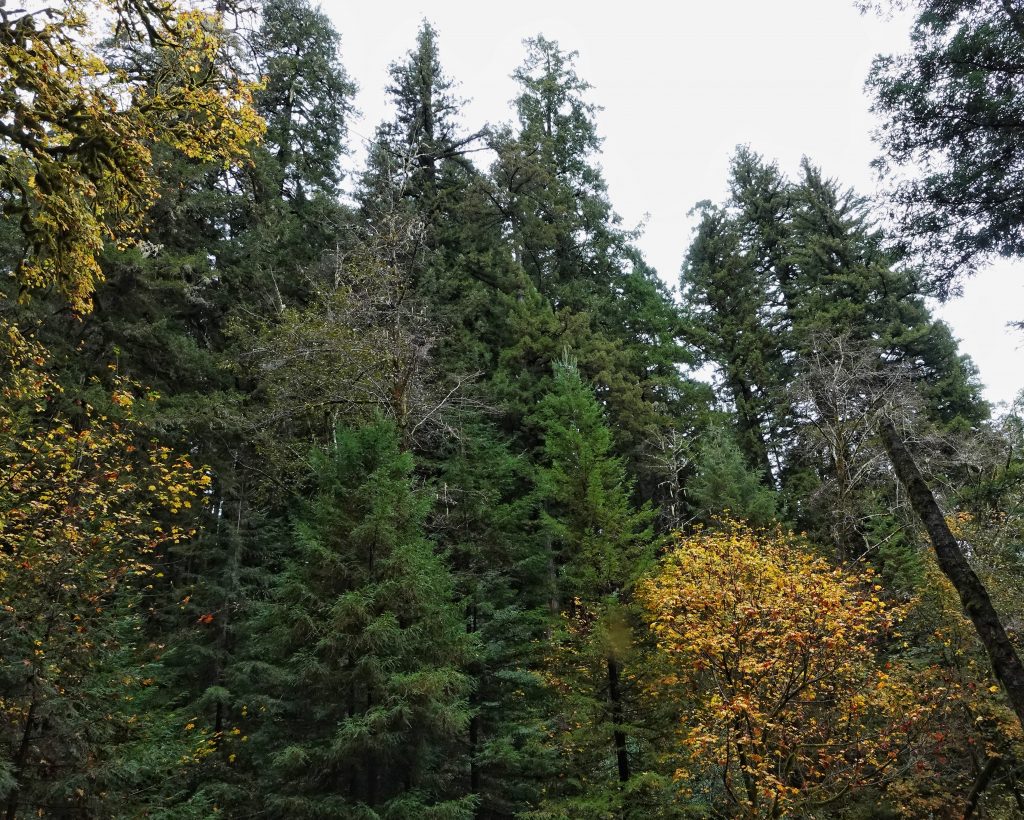
Although redwoods have already been harvested from 95% of their historic range, they are still being cut, albeit almost exclusively from private holdings. Besides the sheer bulk of wood in a single tree, their most attractive trait to the building industry is that the wood is highly resistant to rot and decay. The bark is used as hog fuel in biomass fired power plants and as substrate for paths and even roads, and as bark dust for landscaping purposes. The burls are much prized for woodworking and furniture construction. Indigenous peoples used the tree primarily for its wood, building canoes and dwellings from it. They also had medicinal uses for it, using the bark as a tonic and for jaundice, and as a poultice for venereal disease, and making a tonic of the pitch.
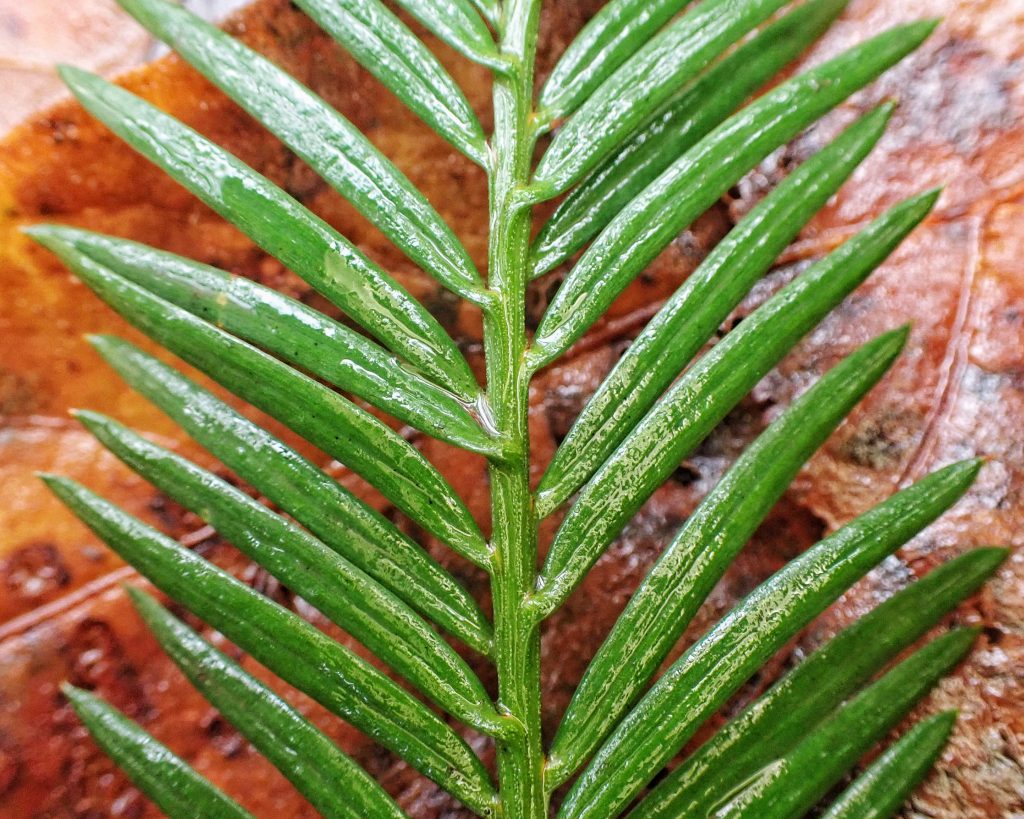
It was very hard for me to imagine, whilst wandering through the grove of these immense trees on the north bank of the Chetco River, in the peaceful, cathedral like splendor of their massive trunks interspersed with an abundance of other species of trees and shrubs, with a canopy so high up that there was an unusual feeling of space in that forest, as well as more light than I’m used to feeling in a deep forest, that someone could walk through such a place and see dollar signs. But such is the case for many humans, most of which are not actually evil, but merely misguided. Let us all hope that the conservation efforts on behalf of these magnificent trees will be enough to save experiences like that for our grandchildren’s grandchildren, and beyond. For more on those efforts, and a timeline of what led to our present situation, see this page from the Save the Redwoods League.
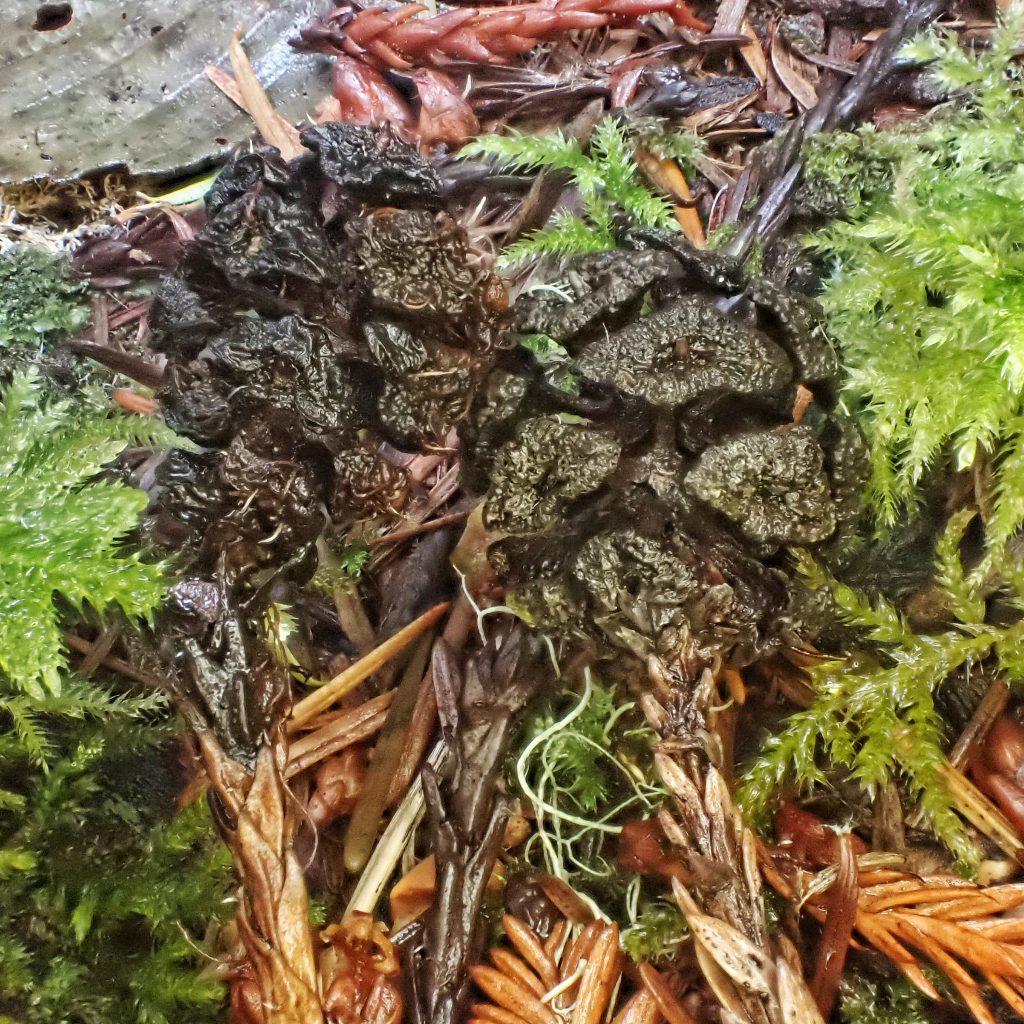
Description-Huge (commonly over 200’ tall, and often over 300’ tall, and may be 20’ dbh, and frequently 10’ or more dbh) conifer with ridged and deeply furrowed, reddish brown bark, and needles that are dark green above and have 2 lines of stomatal bloom below; needles are 6-20mm long, and narrow abruptly to a pointed tip (apiculate); cones are 10-30mm long, reddish brown, oval, with irregularly spaced scales.
Similar species–Yew trees lack stomatal bloom on the underside of the needle; spruce and Doug-fir have needles arrayed around the stem, which are pointed, but not abruptly apiculate; hemlocks and true firs have needles with blunt or notched tips.
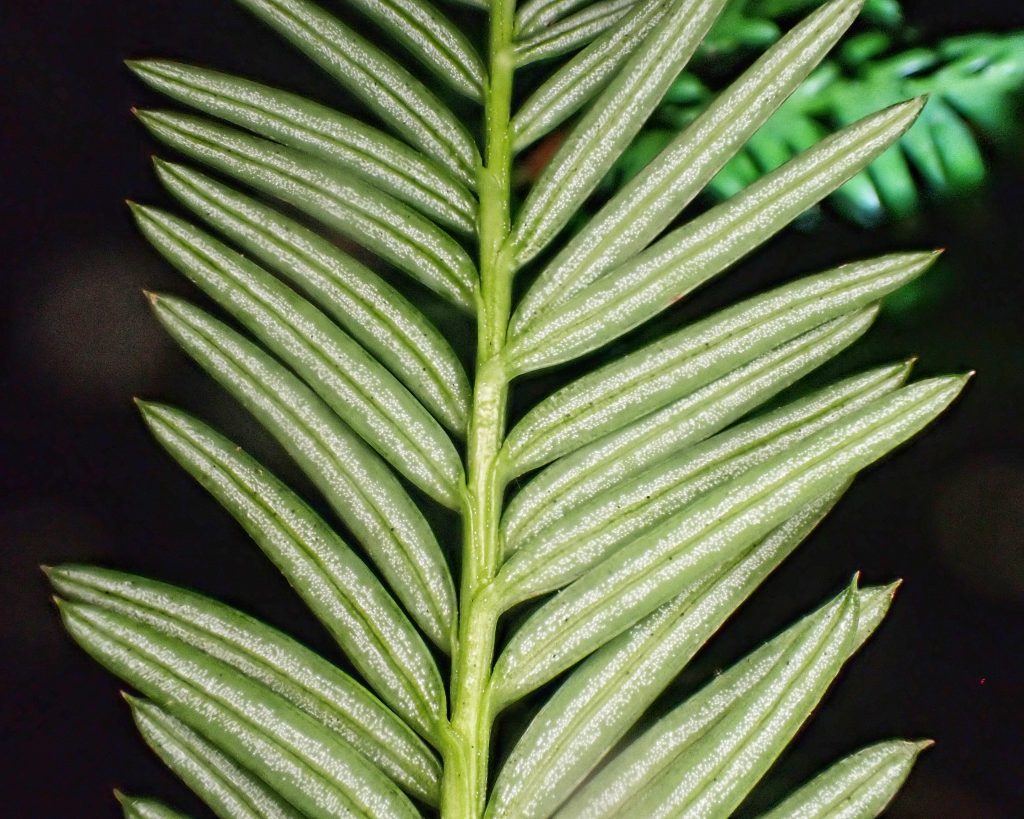
Habitat-Conifer and mixed forests with a strong marine air influence, up to 3,000’ elevation.
Range-From the Chetco River valley in sw Oregon to Big Sur, California, and within 35 miles of the coast.
Reproductive timing-Pollen is released and fertilization happens from November to early March; cones ripen starting in September, and seeds are dispersed from late October to February.
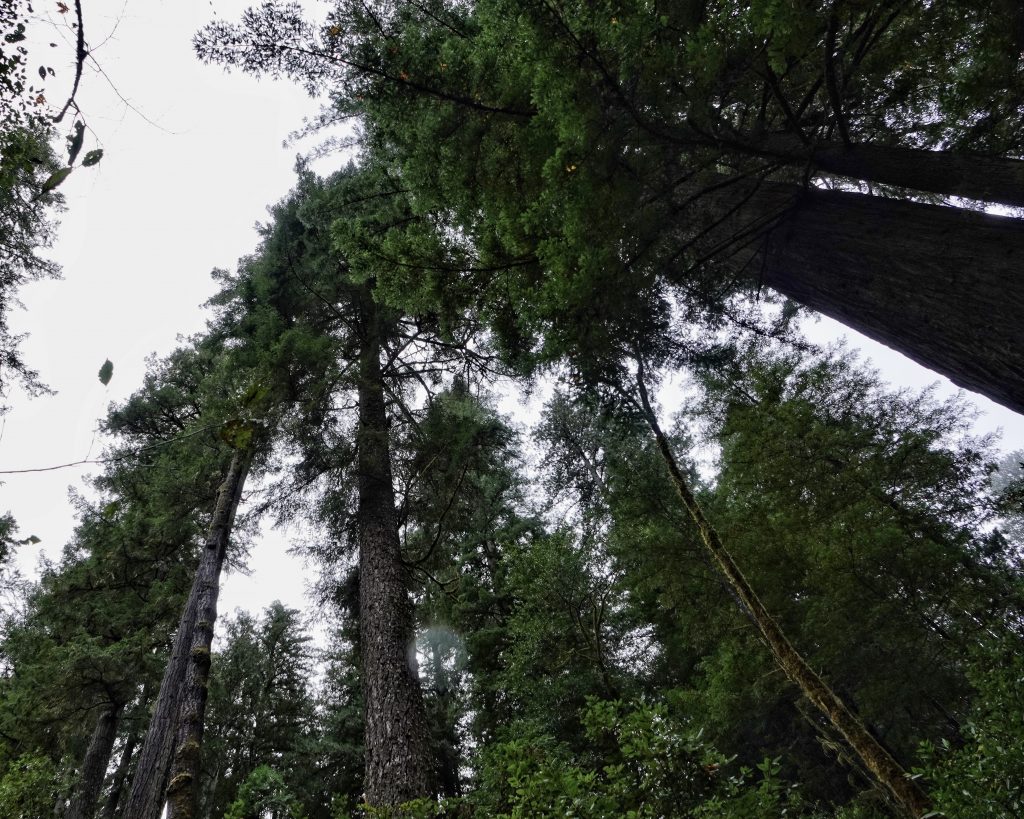
Eaten by-Black bears strip the bark from young trees, and then eat the carbohydrate rich new wood underneath; red tree voles live in the canopy and eat the needles; squirrels, chipmunks, and various birds eat the seeds; a flatheaded twig borer Anthaxia aeneogaster, and two redwood bark beetles Phloeosinus sequoiae and P. cristatus; the longhorn beetles Atimia dorsalis, Callidium leechi, C. sempervirens, C. vandykei, C. violaceipenne, Dicentrus bluthneri, Dorcasina grossa, D. matthewsii, Eburilla sericea, Etorofus obliteratus, Judolia impura, Navomorpha lineata, Oemona hirta, Opsimus quadrilineatus, Phymatodes nitidus, Prionoplus reticularis, Prionus californicus, Semanotus amplus sequoiae, Stenopotes pallidus, Trichocnemis spiculatus, Xestoleptura behrensii, and X. crassipes; the moths Neoalcis californiaria, Synanthedon sequoiae, Argyrotaenia cupressae, A. franciscana, Cochylis dormitoria, Cydia bracteatana, Holcocera iceryaeella, Syndemis afflictana, and Argyresthia cupressella; the leaf beetles Altica prasina, Glyptoscelis sequoiae, and Thricolema anomala.
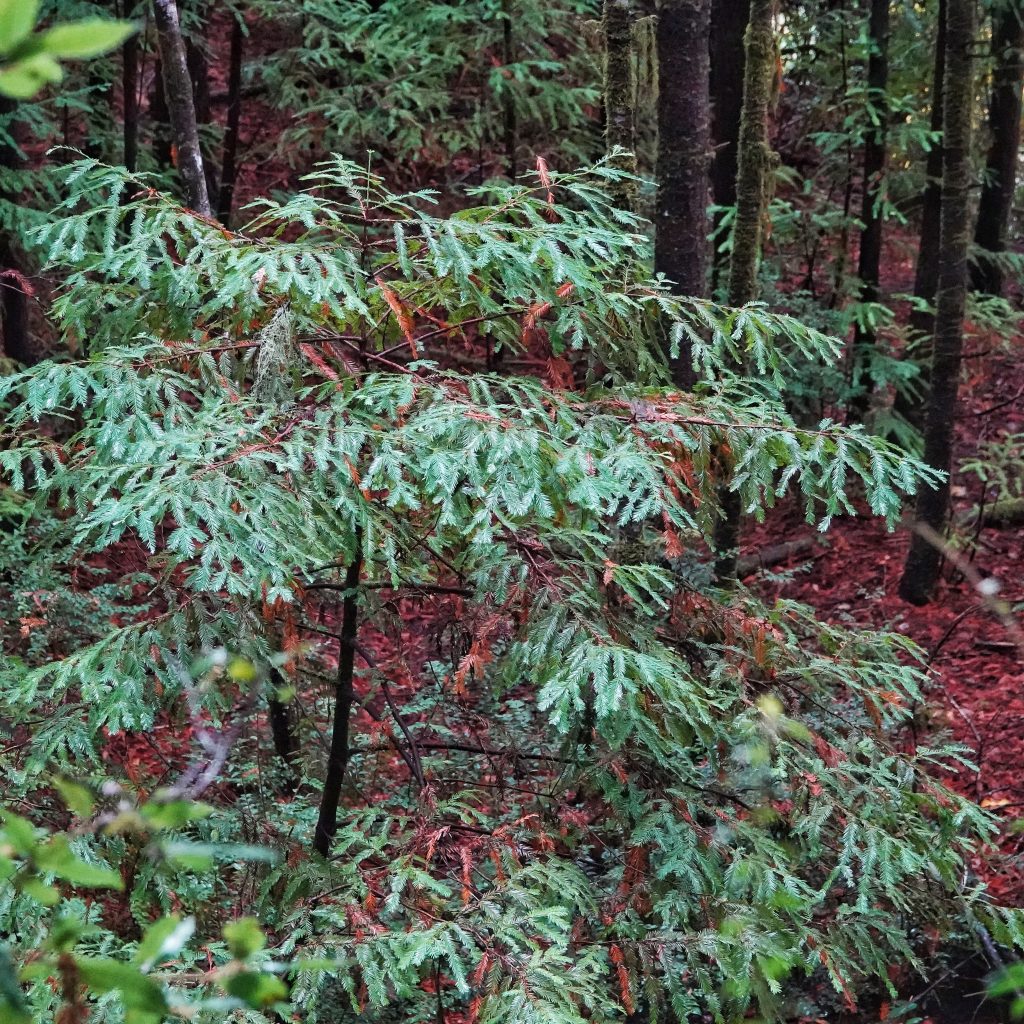
Etymology of names–Sequoia may honor Sequoyah, the creator of a written version of the Cherokee language, and a person that SL Endlicher, the man that originally described this genus, who was a linguist as well as a systematic botanist, would undoubtedly have admired. However, since Endlicher did not explain his reasoning, many people assume it came from the Latin word for ‘sequence’, although opinions are varied on what that may reference. The specific epithet sempervirens is from the Latin words for ‘always green’, referring to the evergreen foliage.
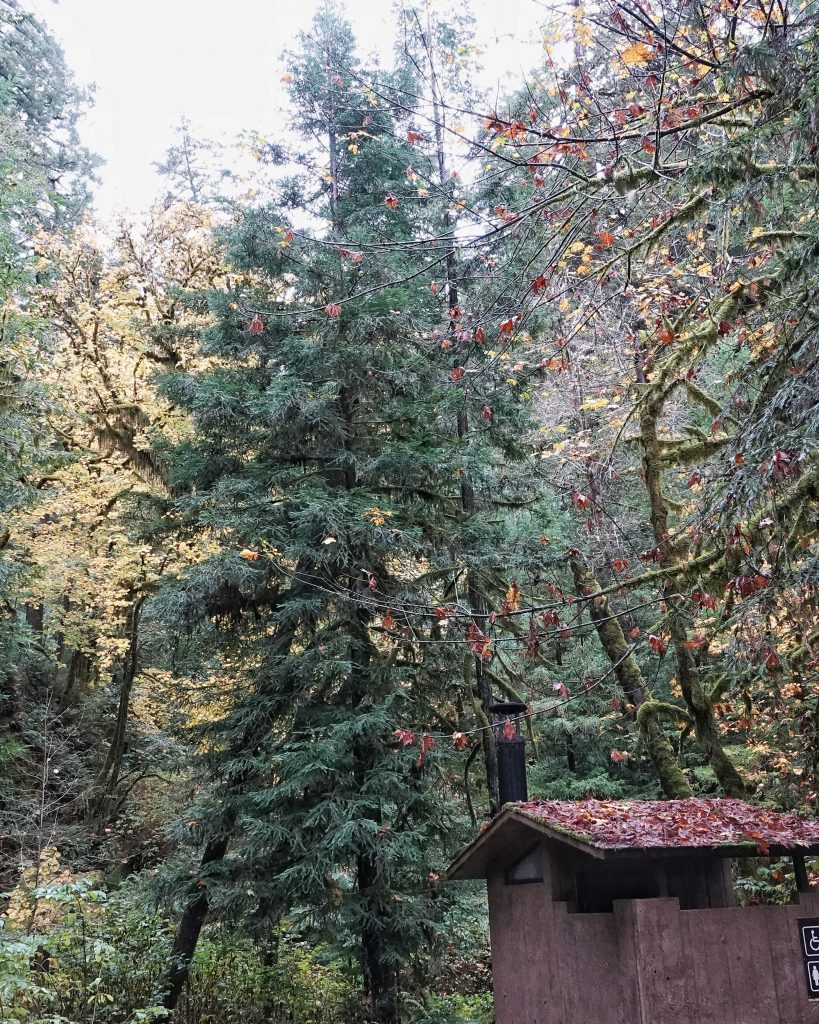
https://www.fs.usda.gov/database/feis/plants/tree/seqsem/all.html
https://www.conifers.org/cu/Sequoia.php
BRIT – Native American Ethnobotany Database
https://en.m.wikipedia.org/wiki/Sequoyah
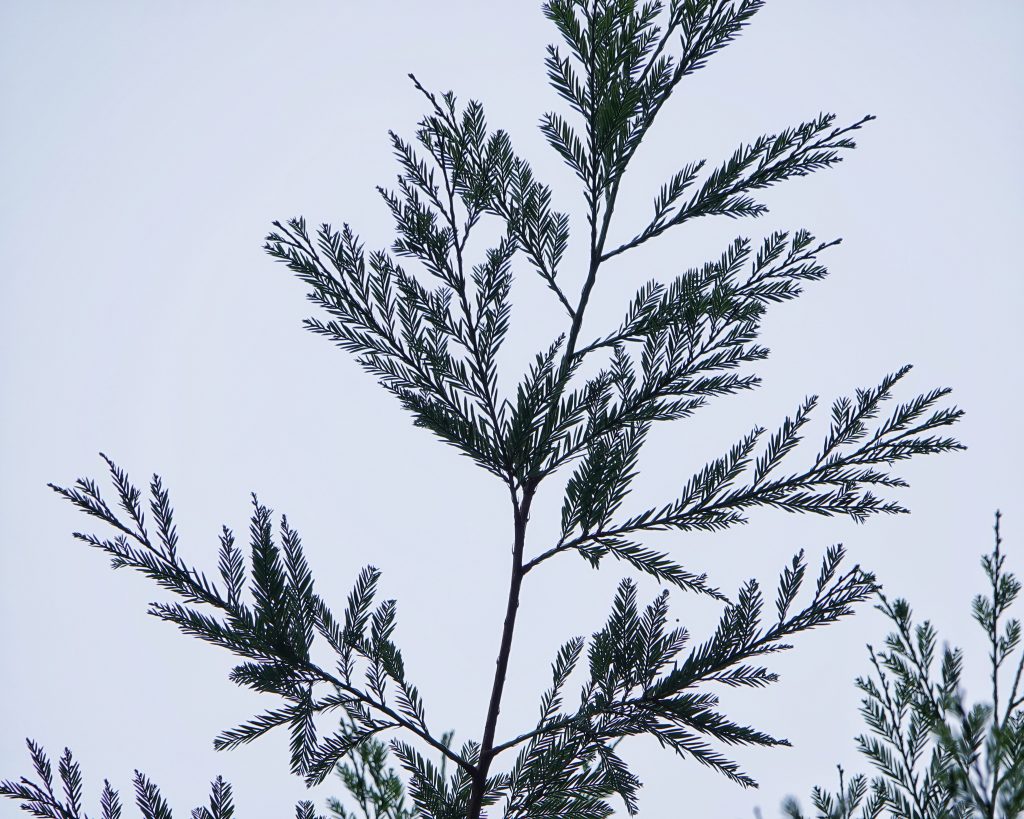
So appreciate the redwood bio.. A pal wants to road trip south in Jan/ Feb to wander amongst the giants. Chetco River never occurred to me as a starting point. It’s on the map now !
Sounds like a fun trip!
I always love how detailed your writeups are! I hadn’t seen a redwood in person until my early thirties, and it really is an experience that defies words. Here’s hoping we can preserve the ones that are left; just staggering that 95% of these enormous trees have been cut in less than two centuries.
Thank you Rebecca! They are truly an awe inspiring tree!